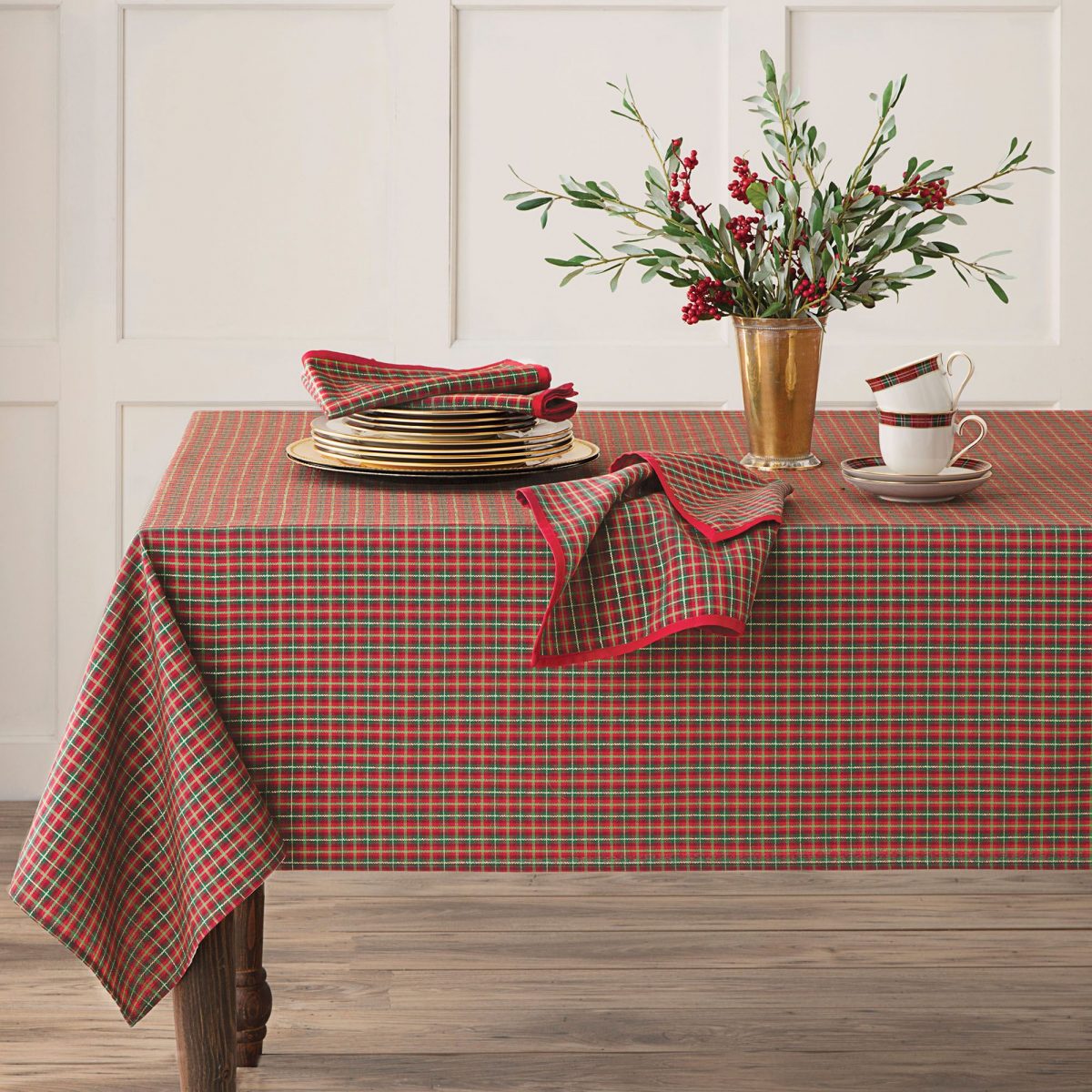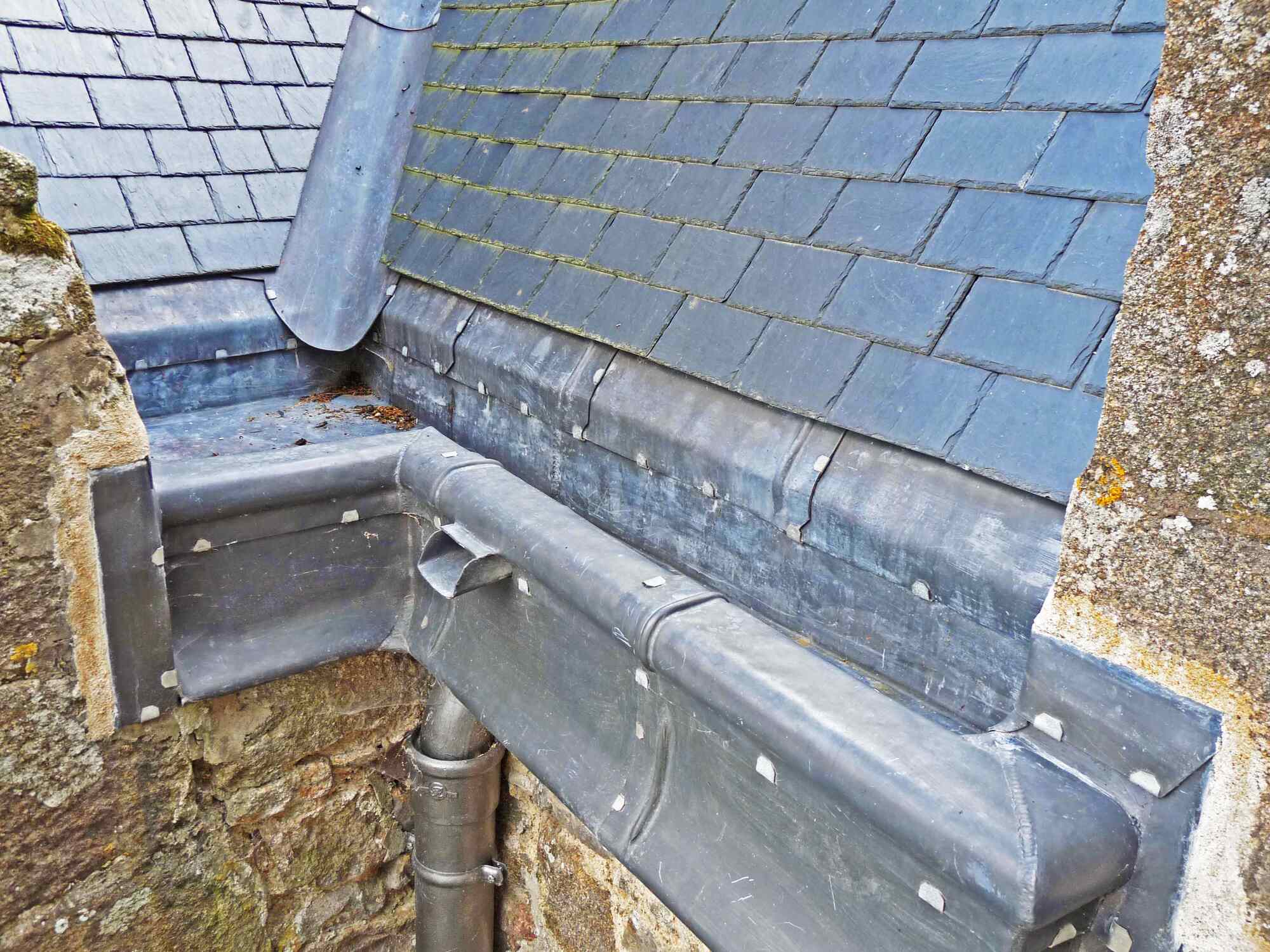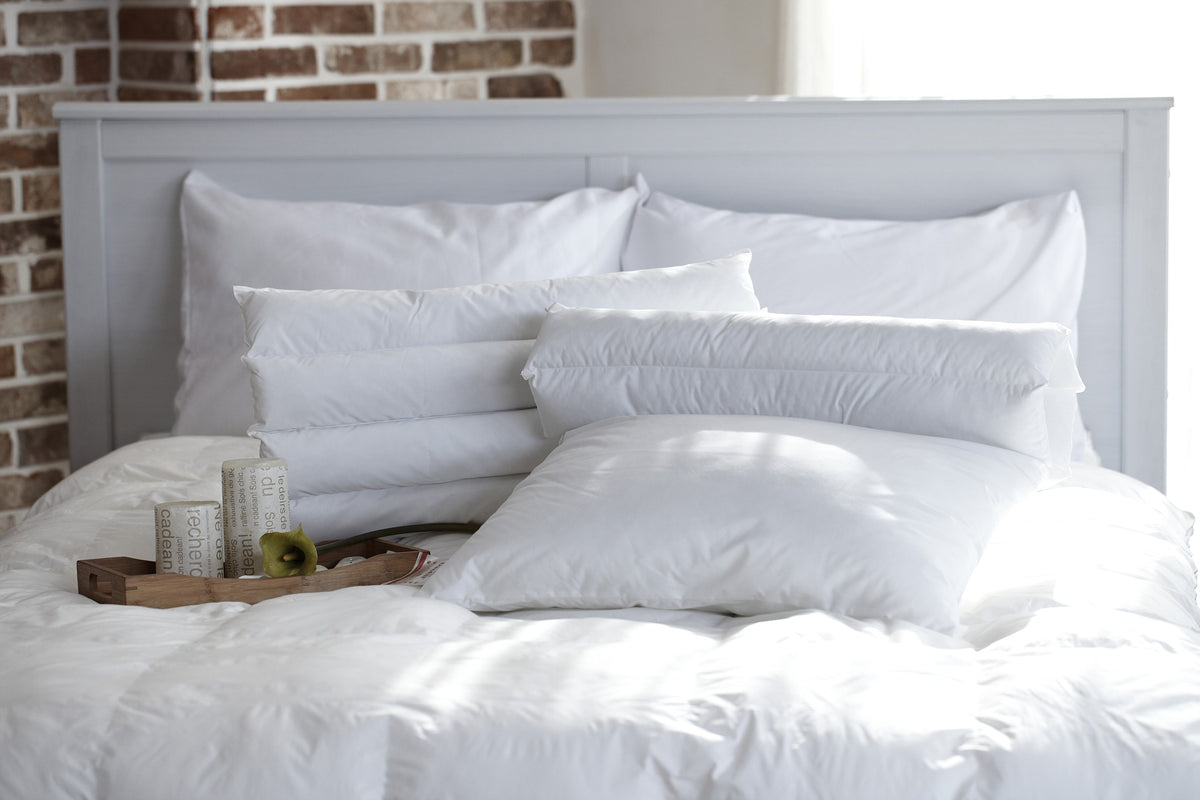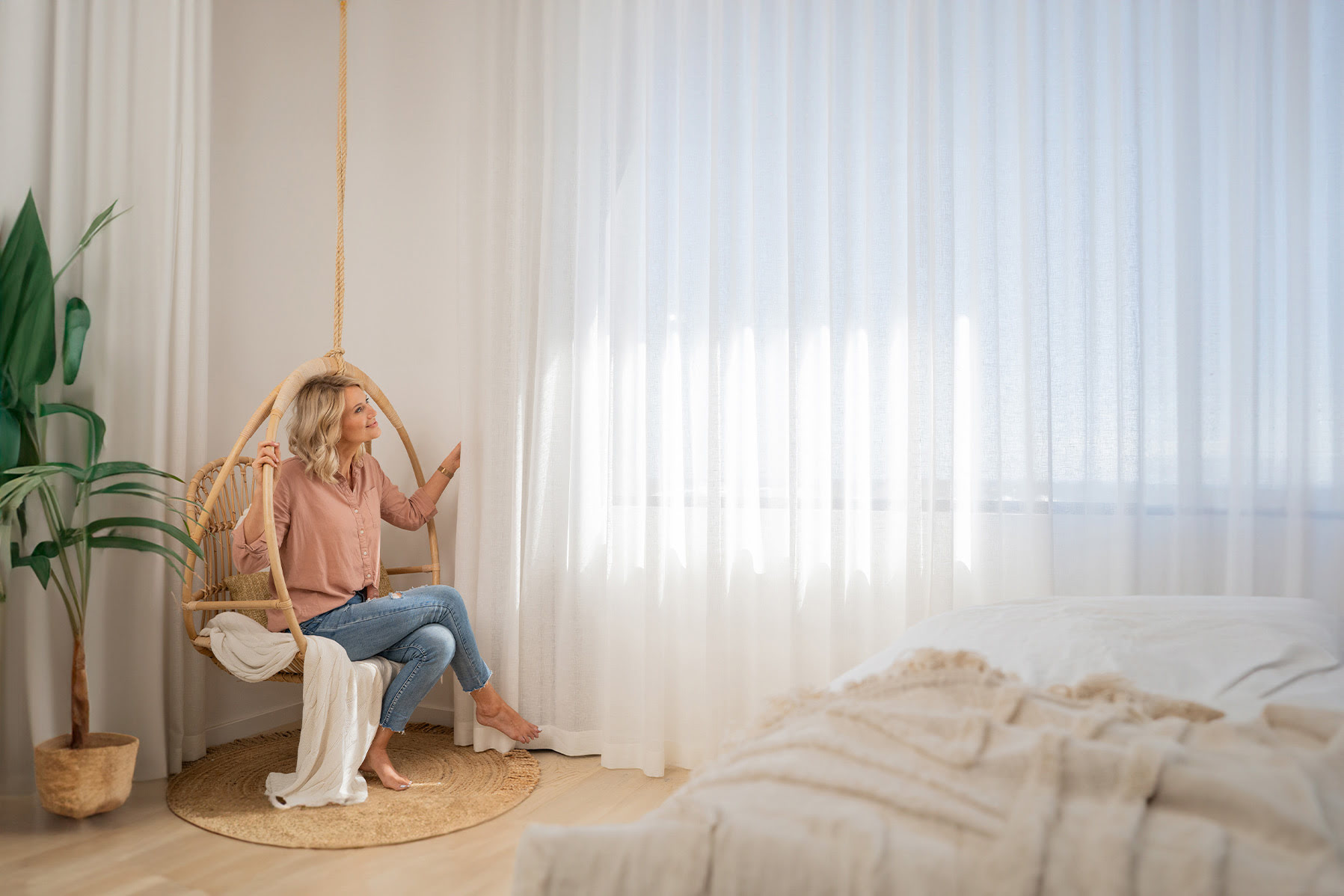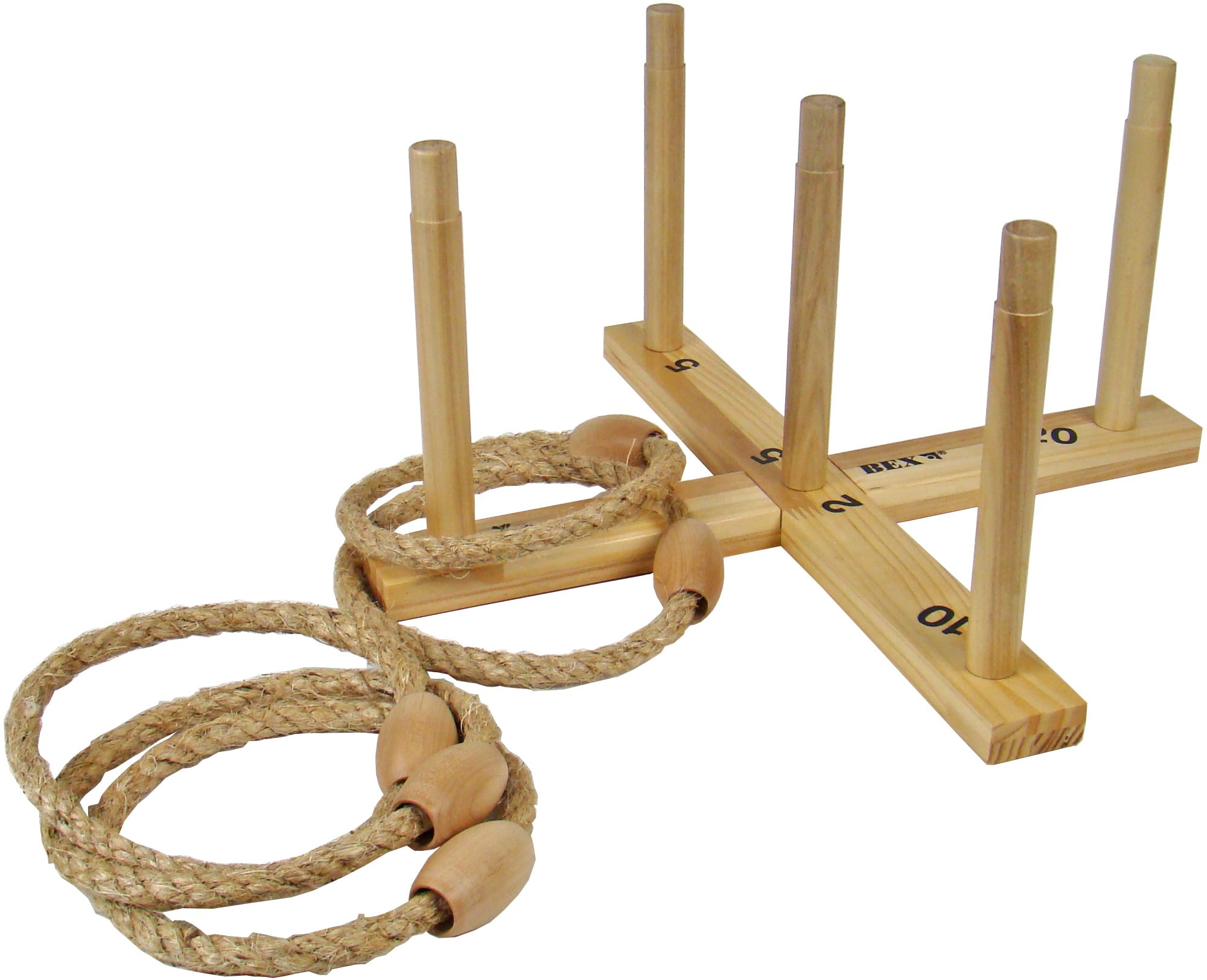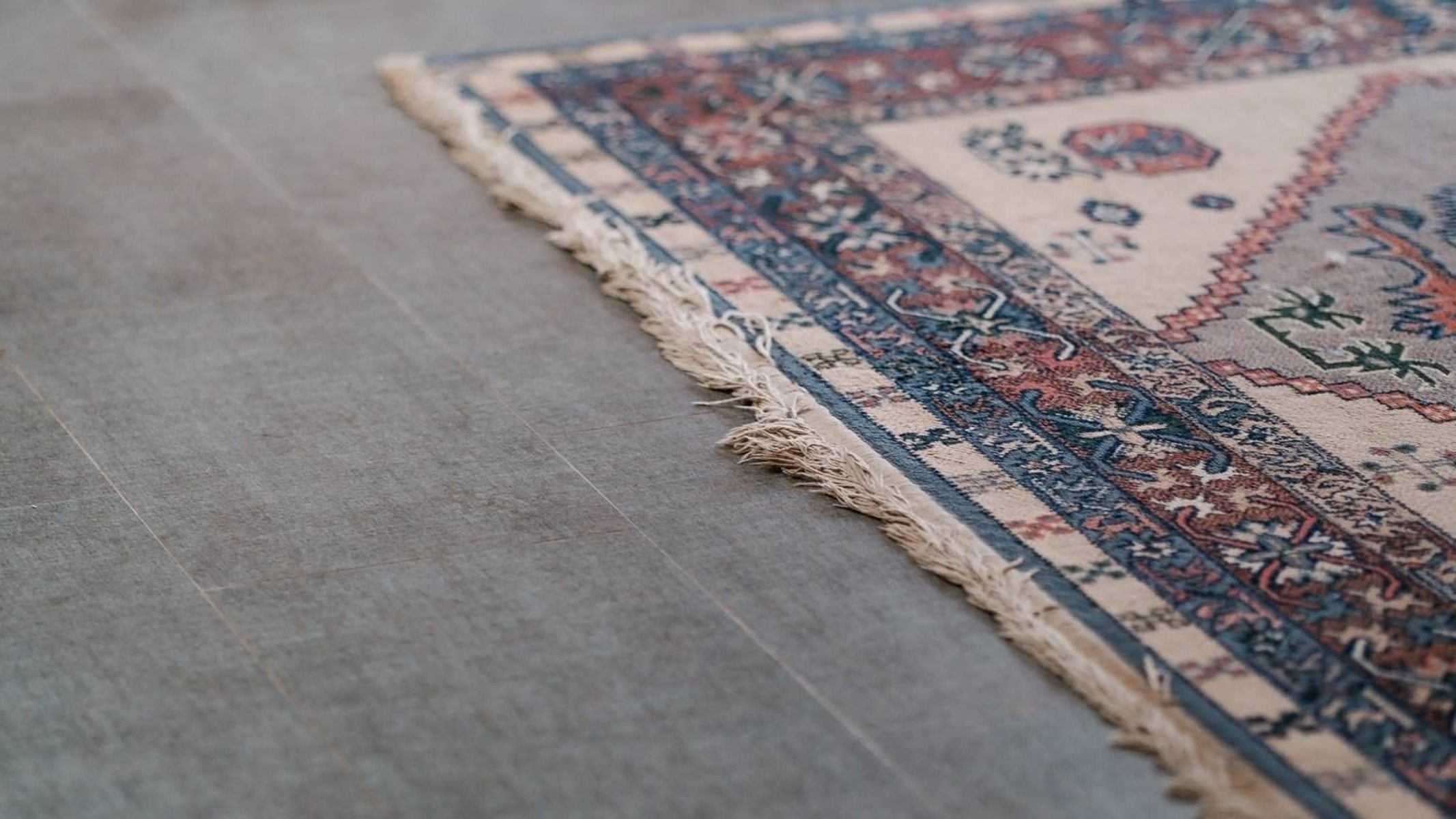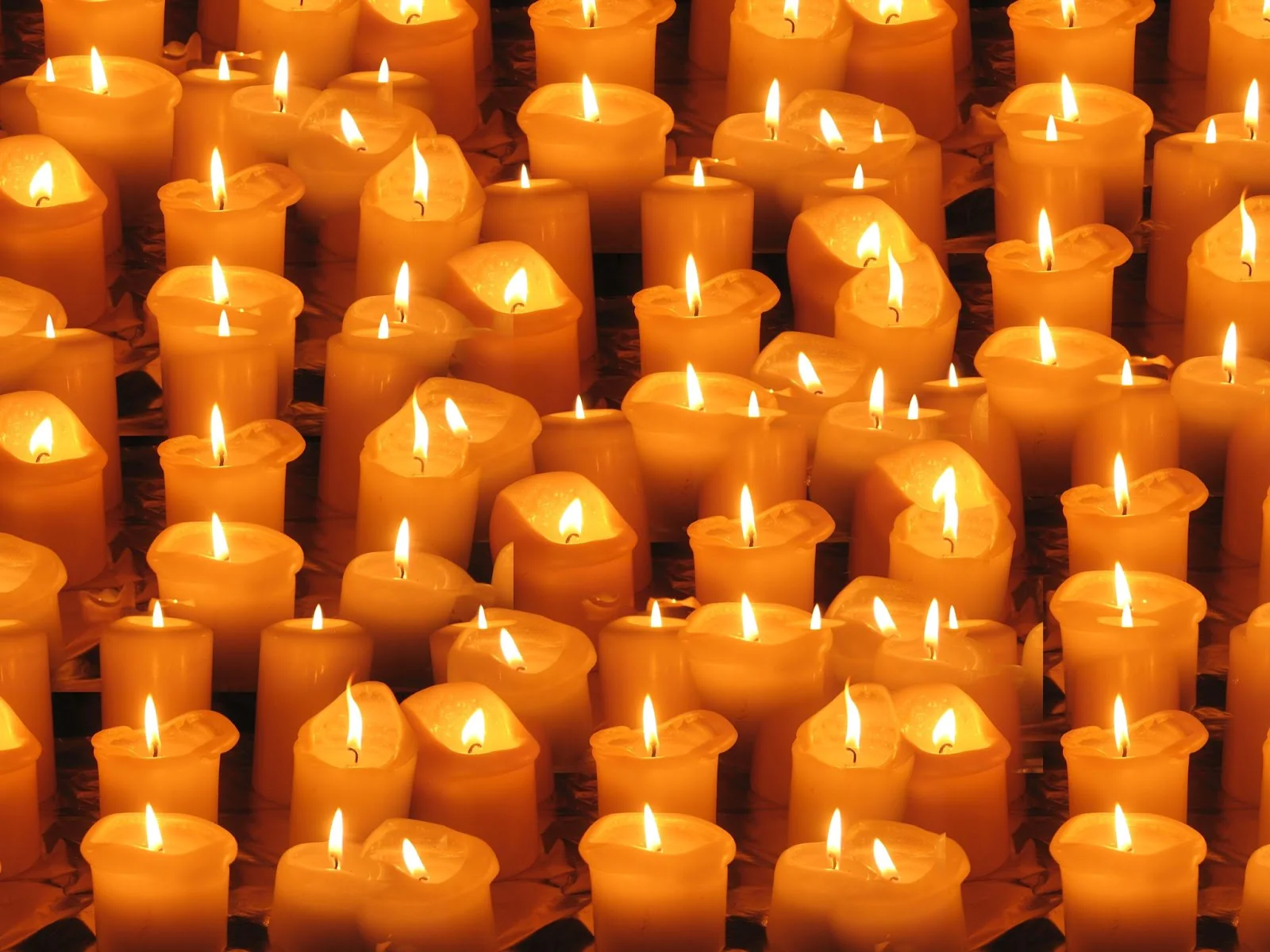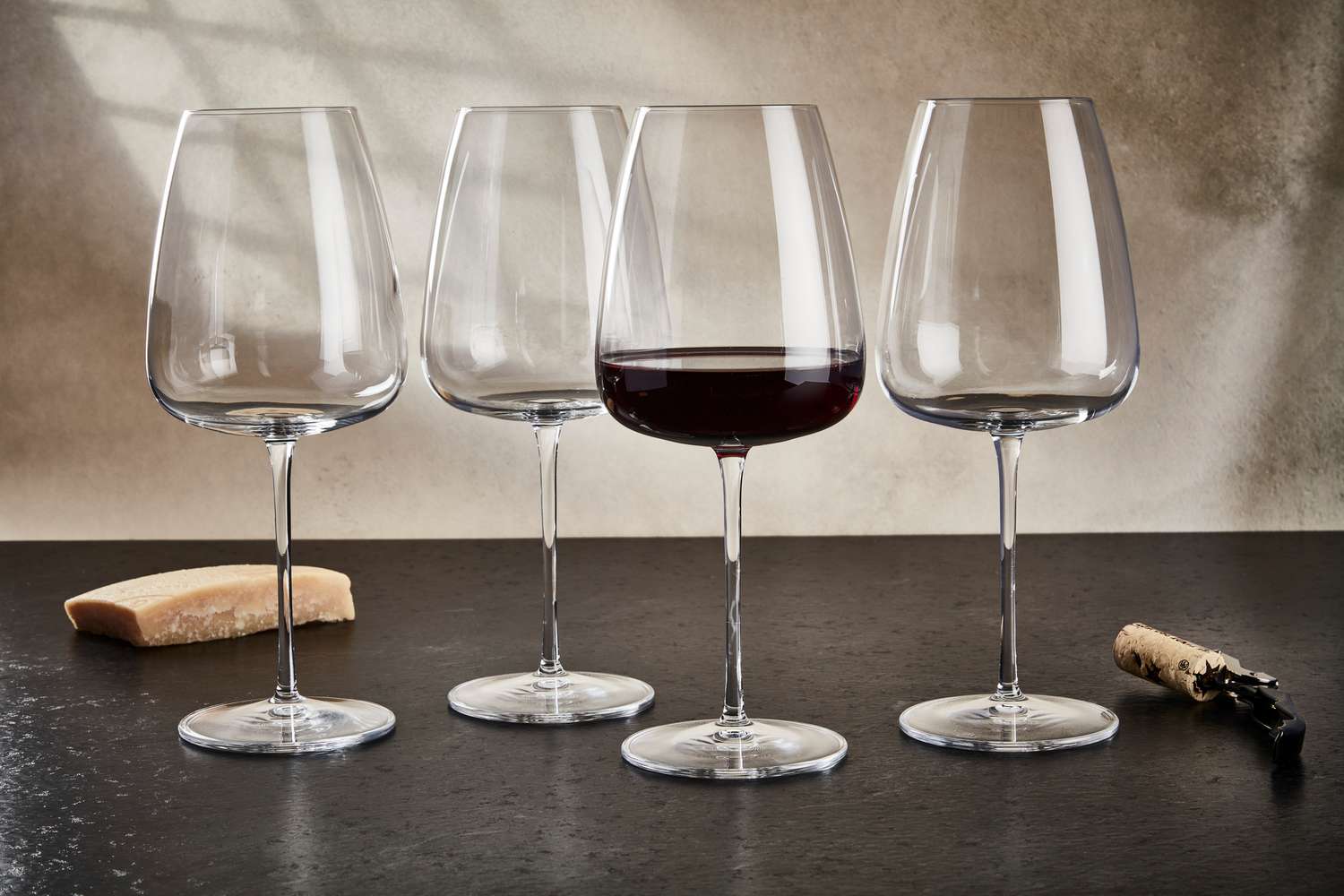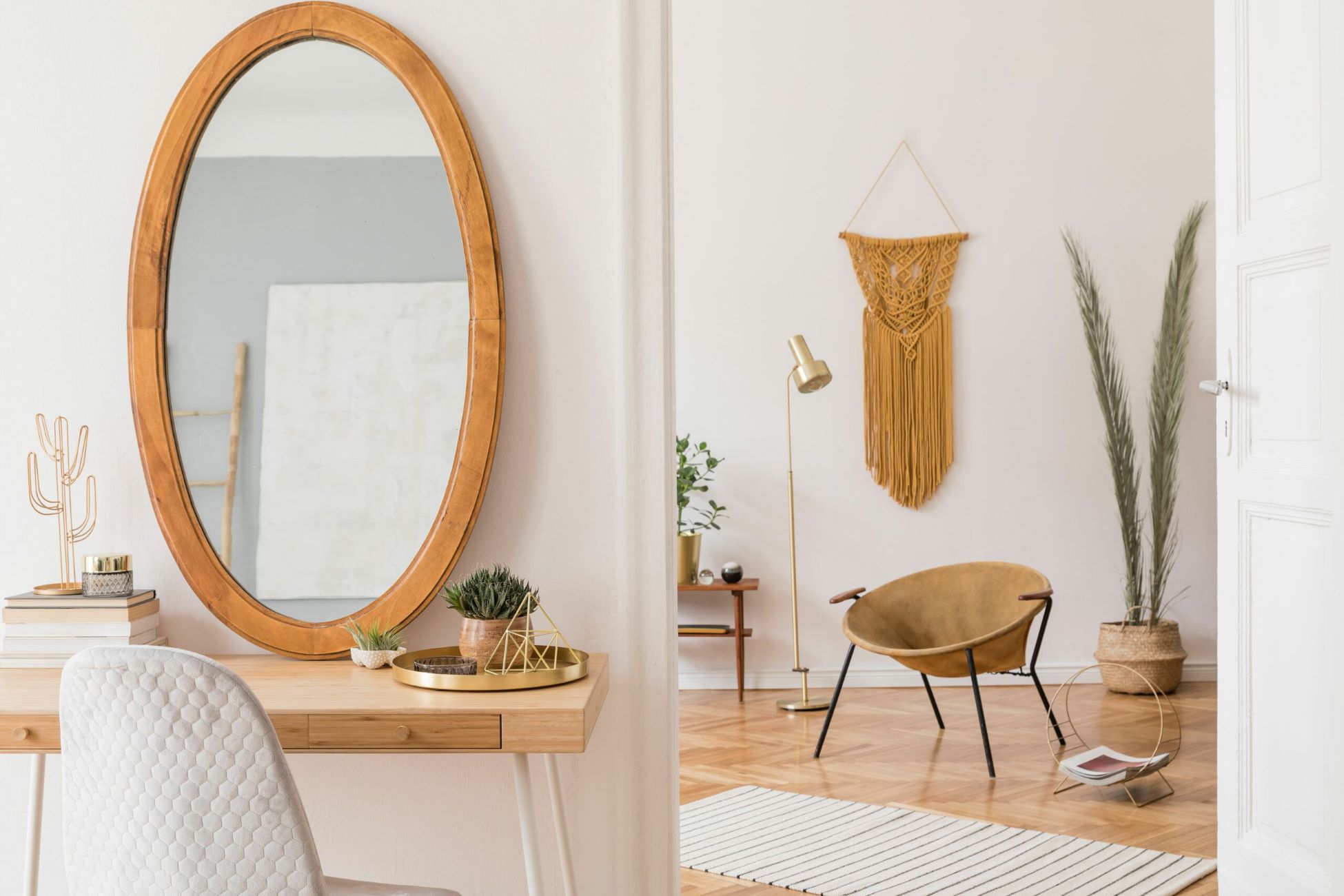

Articles
What Year Were Blinds Invented
Modified: October 20, 2024
Discover the fascinating history of blinds and when they were first invented. Explore our collection of informative articles on the subject.
(Many of the links in this article redirect to a specific reviewed product. Your purchase of these products through affiliate links helps to generate commission for Storables.com, at no extra cost. Learn more)
Introduction
Window coverings have been a staple of human civilization for centuries. From ancient times to the modern era, humans have sought ways to control the amount of light, heat, and privacy that enters their living spaces. One popular type of window covering that has stood the test of time is blinds. Blinds are versatile, practical, and customizable, making them a popular choice for homes and businesses around the world.
In this article, we will delve into the fascinating history of blinds, exploring their origins, evolution, and the role they play in our daily lives. From ancient civilizations to the present day, blinds have undergone numerous transformations to meet the changing needs and preferences of society.
We will explore the early history of window coverings and how blinds emerged as a preferred option. From humble beginnings to modern innovations, blinds have come a long way to become an essential part of interior decor. So, let’s take a journey through time to discover when blinds were invented and how they have shaped our windows over the centuries.
Key Takeaways:
- Blinds have a rich history, evolving from ancient reeds and fabric curtains to modern motorized options, showcasing human creativity and innovation in enhancing living spaces.
- Window coverings, including blinds, have not only served practical functions but also acted as artistic and cultural expressions, reflecting societal values and individual aesthetic preferences throughout history.
Read more: What Year Was The Television Invented
Early History of Window Coverings
The concept of covering windows dates back to ancient civilizations, where the primary goal was to control the amount of sunlight entering a space. In early societies, people used basic materials like animal skins, leaves, and woven mats to create makeshift window coverings.
One of the earliest recorded forms of window coverings can be traced back to ancient Egypt. The Egyptians used reeds and papyrus to create simple blinds that shielded their homes from the harsh desert sun. These early blinds were effective in blocking the sun’s rays while still allowing some ventilation.
Meanwhile, in ancient China, window coverings were used not only to regulate light but also to provide privacy. The Chinese developed paper-based blinds known as “fenestrae”. These were made from bamboo and mulberry paper and featured intricate designs and paintings. Fenestrae played a crucial role in Chinese architecture and were highly valued for their aesthetic appeal.
As civilizations progressed, the Romans introduced a new type of window covering known as “Awnings”. These were canvas or linen coverings that were suspended over windows to provide shade during hot summers. Awnings were attached to a wooden frame and could be extended or retracted as desired.
In medieval times, window coverings took on a different form. Wooden shutters became a common sight, especially in European countries. These shutters were hinged and could be opened or closed to control light, heat, and privacy. Additionally, stained glass windows gained popularity during this period, adding a touch of elegance and color to private residences and religious buildings.
Throughout history, the development of window coverings was influenced by cultural, technological, and social factors. As societies evolved, so did the materials and techniques used to create window coverings. The early history of window coverings laid the foundation for the invention of blinds, which we will explore in the next section.
Ancient Window Coverings
In ancient times, various civilizations devised ingenious methods to cover their windows, offering protection from the elements and enhancing privacy. These early window coverings laid the groundwork for the creation of blinds.
One notable example of ancient window coverings is found in ancient Greece and Rome. The Greeks utilized wooden shutters to regulate light and airflow. These shutters were hinged and could be opened and closed horizontally or vertically. In addition to their practical function, Greek shutters often featured ornate carvings and intricate designs, adding a touch of elegance to the windows.
The Romans, known for their architectural prowess, utilized a similar shutter system. However, they also developed a unique type of window covering known as “pervigilium”. Pervigilium were fabric curtains made from materials such as silk, linen, or cotton. They were used to filter light and provide privacy, especially in wealthier households and public buildings. These curtains were often dyed in vibrant colors and adorned with elaborate patterns.
Meanwhile, in ancient Japan, the traditional tatami rooms featured an in-built design element called “shoji”. Shoji are sliding wooden frames covered with translucent paper or fabric. These screens allowed soft diffused light to enter the room while maintaining privacy. Shoji screens are still prevalent in modern Japanese architecture, showcasing the longevity and versatility of these ancient window coverings.
In ancient Persia (modern-day Iran), window coverings known as “khesht” were used. Khesht were intricately carved wooden window screens that served both functional and decorative purposes. These screens were designed to allow cooling air to flow through while protecting the interior from dust and prying eyes.
Throughout ancient civilizations, window coverings were a necessity rather than a luxury. They played a crucial role in regulating light, privacy, and temperature within living spaces. These early window coverings set the stage for the development of blinds, which would revolutionize the way we cover our windows. In the next section, we will explore window coverings during the medieval period.
Medieval Window Coverings
The medieval period brought about significant advancements in architecture and design, which influenced the evolution of window coverings. During this time, window coverings became more elaborate and decorative, reflecting the social status and wealth of homeowners.
One prominent type of window covering during the medieval era was stained glass. Stained glass windows were considered works of art, portraying intricate religious scenes, heraldic symbols, and mythical creatures. These colorful windows allowed light to filter through while adding a touch of grandeur to castles, cathedrals, and manor houses.
In addition to stained glass, window shutters continued to be popular during the medieval period. However, they became more sophisticated, featuring intricate carvings and decorative elements. Wooden shutters were often painted with vibrant colors or adorned with embossed patterns to enhance their aesthetic appeal.
Another interesting feature of medieval window coverings was the use of fabric draperies. Heavy tapestries and curtains made from richly woven fabrics were used to cover windows, providing insulation and adding a touch of opulence to the interior spaces. These fabric coverings often featured intricate patterns, scenes from mythology, or heraldic symbols that conveyed the status and wealth of the occupants.
During the later part of the medieval period, window coverings also served as a means of communication. In the absence of telecommunication systems, people would use specific configurations of shutters or curtains to convey messages to others. For example, certain arrangements of shutters could indicate whether a household was celebrating, mourning, or participating in significant events.
The medieval window coverings not only provided functional benefits but also became important artistic and cultural elements. The intricate designs and luxurious materials used in these window coverings showcased the craftsmanship and wealth of the period. As we move through history, we will explore how the Renaissance period introduced new innovations to window coverings.
The first known use of window blinds was in ancient Egypt, around 3,000 BC. They were made of reeds and hung from the top of the window.
Renaissance Window Coverings
The Renaissance period marked a turning point in the history of window coverings, as it brought about a renewed interest in art, architecture, and technological advancements. During this time, window coverings became more refined, elegant, and functional, reflecting the changing tastes and ideals of society.
One notable development in Renaissance window coverings was the introduction of curtains made from luxurious fabrics such as velvet, damask, and brocade. These opulent materials were often adorned with intricate patterns, embroidery, and gold thread, adding a sense of grandeur to the windows. The curtains were hung from ornate rods or tasseled tiebacks, further enhancing their visual appeal.
Another innovation during the Renaissance was the use of double-hung windows, which allowed for better ventilation and control of light. To complement these windows, a new type of window covering called “pelmets” or “valances” was introduced. Pelmets were decorative cornices made from wood or fabric that were placed above the window frame. They served as both a decorative element and a means to conceal curtain rods and tracks.
The Renaissance period also saw an increased use of glass in window coverings. Thin glass panes or casement windows were utilized, allowing more natural light to enter the space. These windows were often covered with lightweight curtains or “window hangings” that could be opened or closed as needed.
Additionally, the Renaissance gave rise to the concept of privacy screens or “portieres”. These were heavy fabric curtains suspended from doorways or arches, providing privacy and separating different areas within a room. Portieres were often adorned with elaborate fringe, beads, or tassels, making them a statement piece in interior design.
The Renaissance period marked a significant shift in window coverings, blending functionality with aesthetic appeal. The introduction of luxurious fabrics and intricate designs transformed windows into focal points of architectural beauty. As we move forward in time, we will explore the window coverings of the 18th and 19th centuries.
Read more: What Year Was The Refrigerator Invented
18th and 19th Century Window Coverings
The 18th and 19th centuries were characterized by significant social, technological, and industrial developments, which influenced the design and functionality of window coverings. During this time, window coverings became more accessible and versatile, catering to a wider range of individuals and their specific needs.
One notable innovation during this period was the introduction of roller blinds. Roller blinds were made from fabric or vinyl and operated using a rolling mechanism, allowing them to be easily rolled up or down to control light and privacy. This invention revolutionized the window covering industry, offering a convenient and efficient solution.
In addition to roller blinds, curtains and draperies remained popular during the 18th and 19th centuries. Now, more affordable materials such as cotton and linen were used to create curtains, making them accessible to a broader range of individuals. These curtains were often hung from decorative curtain rods or ornate tiebacks, adding a touch of elegance to the windows.
The advent of the Industrial Revolution also had a significant impact on window coverings. The mass production of textiles and machinery allowed for more intricate and affordable designs. Innovations such as lace curtains and embroidered sheers became popular during this time. These delicate window coverings provided a sense of privacy while allowing diffused light to enter the space.
During the latter part of the 19th century, window blinds made from materials such as bamboo, wood, or metal gained popularity. These blinds could be operated using a pulley or cord system, allowing for easy adjustment of light and privacy levels. Venetian blinds, with horizontal slats, became particularly fashionable, offering a modern and stylish alternative to curtains.
As cities grew more crowded, privacy became a more pressing concern, resulting in the development of frosted glass and etched window panes. These techniques allowed light to filter through while obscuring the view from outside. Such window treatments were commonly used in public buildings, offices, and private residences.
The 18th and 19th centuries witnessed a diversification of window coverings, with a wider range of options available to suit different preferences and budgets. The industrial advancements, along with societal changes during this period, heavily influenced the design and functionality of window coverings.
Modern Window Blinds
In the modern era, window blinds have become a popular choice for both residential and commercial spaces. They offer versatility, functionality, and a sleek aesthetic that fits well with contemporary interior design styles. Modern window blinds come in a variety of materials, styles, and operating mechanisms to suit different needs and preferences.
One of the most common types of modern window blinds is the horizontal blinds. These blinds consist of horizontal slats that can be tilted to control the amount of light entering a room. They are typically made from materials such as aluminum, wood, or faux wood. Horizontal blinds provide a clean and minimalist look, making them a popular choice for modern homes and offices.
Vertical blinds are another popular option, especially for larger windows and sliding doors. These blinds consist of vertical slats that can be rotated and drawn to the side for easy access and light control. Vertical blinds are commonly made from fabric, vinyl, or a combination of both. They offer excellent privacy and light control and can add a touch of elegance to any space.
Roller blinds have also seen a resurgence in popularity in recent years. These blinds are made from a single piece of fabric that rolls up and down, controlled by a chain or motorized mechanism. Roller blinds come in a wide range of colors, patterns, and opacity levels, allowing you to customize them to your specific needs. They are a versatile option for any room, offering simplicity and ease of use.
For those seeking a more luxurious and refined look, Roman blinds are an excellent choice. These blinds feature a series of soft folds that create an elegant and stylish appearance when raised. Roman blinds can be made from various fabrics, including linen, silk, or damask, allowing you to create a sophisticated and personalized look for your windows.
Motorized blinds have become increasingly popular in the modern era, offering convenience and ease of use. With motorized blinds, you can control your window coverings with the touch of a button or through a remote control or smart device. This innovative technology allows for precise control over light, privacy, and temperature, making it a popular choice for smart homes and tech-savvy individuals.
Modern window blinds have evolved to meet the changing needs and preferences of contemporary living. They offer a perfect blend of functionality, style, and customization options. Whether you prefer the clean lines of horizontal blinds, the elegance of Roman blinds, or the convenience of motorized blinds, there is a modern window blind option to suit every space and aesthetic.
Conclusion
Window coverings have come a long way since their humble beginnings in ancient civilizations. From animal skins and reeds to modern-day blinds, the evolution of window coverings has been shaped by changing technologies, aesthetics, and social needs.
Throughout history, window coverings have served various purposes, including providing privacy, controlling light and temperature, and enhancing the visual appeal of interiors. Each era has contributed its own unique designs and materials, resulting in a diverse range of options for modern homeowners and businesses.
Blinds, in particular, have emerged as a versatile and popular choice for window coverings. With their adjustable slats, they offer precise control over light and privacy levels. Whether it’s the classic charm of horizontal blinds, the elegance of Roman blinds, or the sleek functionality of roller blinds, there is a blind style to suit every taste and interior design aesthetic.
Over the years, window coverings have not only fulfilled practical functions but also served as artistic and cultural expressions. From the intricate stained glass windows of the Renaissance to the opulent fabrics and intricate patterns of the 18th and 19th centuries, window coverings have played a significant role in shaping the atmosphere and character of living spaces.
In the modern era, window coverings continue to evolve with advancements in technology and design. Motorized blinds and smart home integration have made it easier than ever to control and customize window coverings with the touch of a button. Additionally, sustainable and eco-friendly materials have gained popularity, allowing individuals to make environmentally-conscious choices for their homes.
Whether it’s ancient civilizations seeking relief from the desert sun, medieval societies desiring privacy and elegance, or contemporary homeowners looking for functional and stylish window coverings, the evolution of blinds and window coverings showcases the ingenuity and creativity of human innovation.
In conclusion, the invention and evolution of window coverings, including the development of blinds, have played a significant role in enhancing our living spaces throughout history. From ancient times to the modern era, window coverings have not only served practical purposes but also acted as a reflection of societal values and individual aesthetic preferences. As technology continues to advance and design trends evolve, we can expect even more innovative and visually stunning window covering options to grace our homes and commercial spaces in the future.
Frequently Asked Questions about What Year Were Blinds Invented
Was this page helpful?
At Storables.com, we guarantee accurate and reliable information. Our content, validated by Expert Board Contributors, is crafted following stringent Editorial Policies. We're committed to providing you with well-researched, expert-backed insights for all your informational needs.
